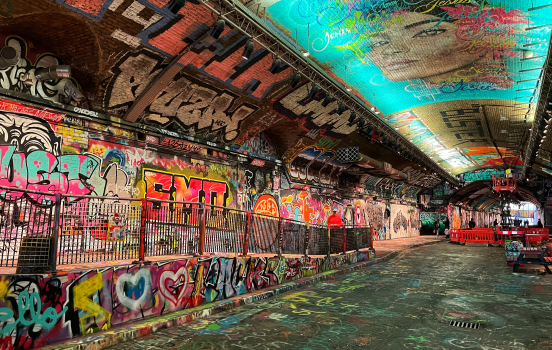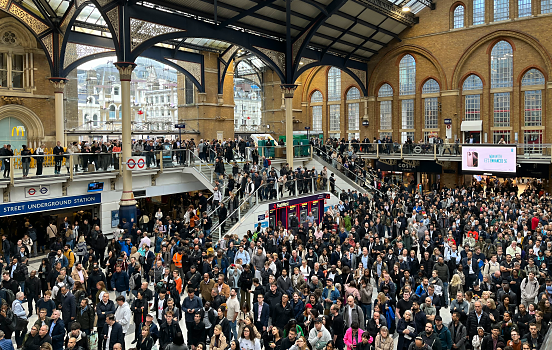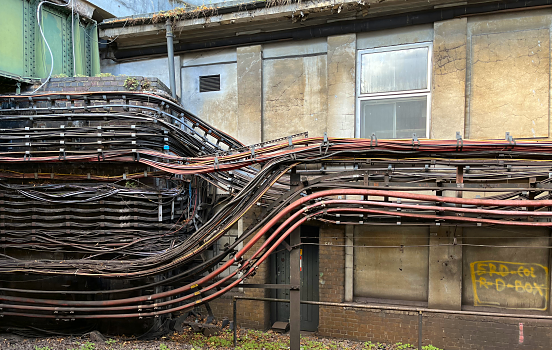Landing back in London usually hits me like a headlong plunge into a familiar rabbit hole, but this time, something is different. The city has been rattled by Brexit, reeling from the loss of Queen Elizabeth and gasping for air once more after the Covid times.
London is a city forever on the move, while anchored in the past. Even though much has changed since my last visit, I noticed that my bench in Jubilee Gardens is still there.
 Sometimes the underworld is more colorful than the surface.
Sometimes the underworld is more colorful than the surface.
I also noticed that London has been hit hard by the tourist hordes. It’s quite understandable, since London is one of the great cities on the planet. But unfortunately it feels like many visitors are satisfied with looking up at an old clock tower by the river, queuing to see stiff postmortem-looking wax dolls or stumbling drunk through Soho’s neon gutters. Whatever floats their boat, but that is only scratching the surface (literally) of this giant metropolis.
 The lemmings are eager to get under the ground.
The lemmings are eager to get under the ground.
In fact, a lot of London is mirrored under the surface. The tube stretches all across the city, with a vast network of tunnels, stairs and access shafts. London used to have several small rivers and creeks, but today they are all stashed away under the streets.
In order to survive rush hour on the tube, efficiency is essential. Citizens are obeying the escalator’s unspoken rule: keep right if you don’t want to get physically assaulted.
While I appreciate the fast translocation offered by the dirty tube trains, I certainly don’t enjoy the deafening screech as the metal cages grind their way through the tunnels. In his seminal book “London: The Biography”, Peter Ackroyd writes about “the sound from the monster”, as if London is one large organism. In the darkness below, there could be a cousin of Cthulhu snoring loudly.
 It takes a bit of wiring to power the beast.
It takes a bit of wiring to power the beast.
There are also forgotten tunnels and abandoned stations. Ever been to the British Museum station? It exists in reality, not just in the Neil Gaiman novel “Neverwhere”.
In his 2004 book “In search of the pleasure palace”, Marc Almond described London as “a place clouded in blue smoke and bright lights”, which may certainly still ring true on several locations.
 Egyptian Avenue in Highgate Cemetery.
Egyptian Avenue in Highgate Cemetery.
While London is making a lot of noise 24-7, there are some areas that may seem tranquil on the surface, but still are highly dependent of forces below the ground. Highgate Cemetery is a splendid treasure of Victorian beauty, but the steady stream of visitors are likely attracted also because of its famous graves, such as Karl Marx, Michael Faraday, Douglas Adams and George Michael. A veritable garden of death where about 170 000 people are buried.
If you look closely, there are silent places to be found even in London. As I’m walking alone on the peaceful Lower Mall in Hammersmith, I’m carefully making sure to stay away from the mayhem in Chinatown and not setting my feet anywhere near Leicester Square.
There are so many layers of London and I enjoy exploring them one by one.

Comments
No comments yet.
Leave a reply